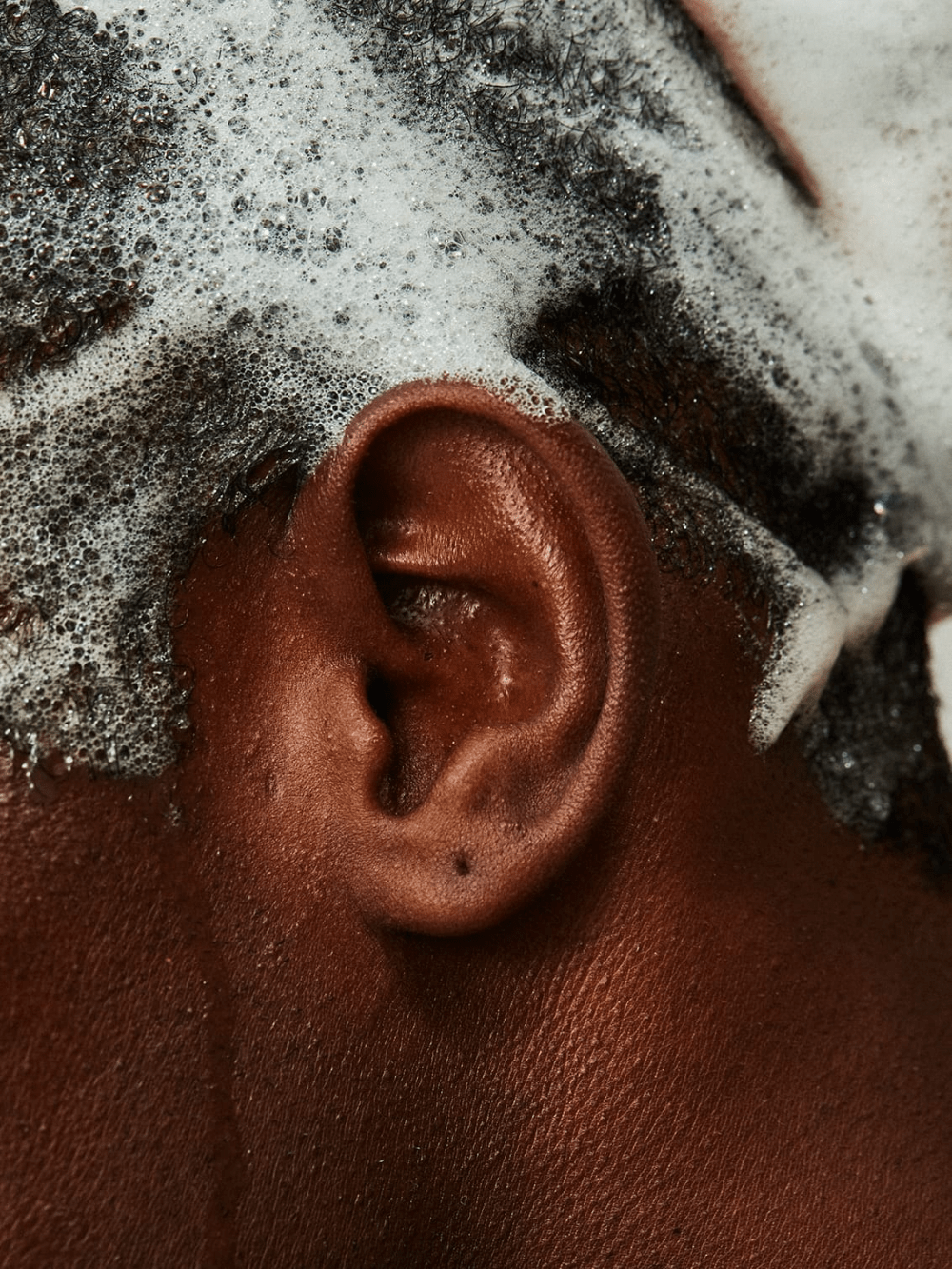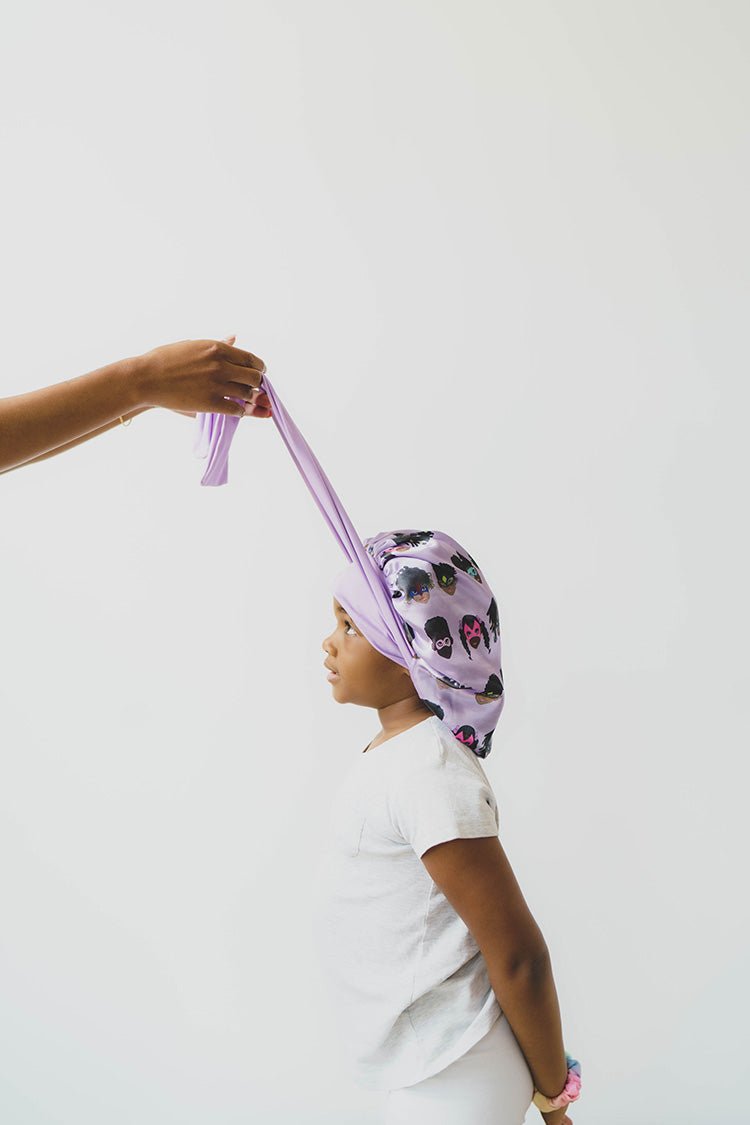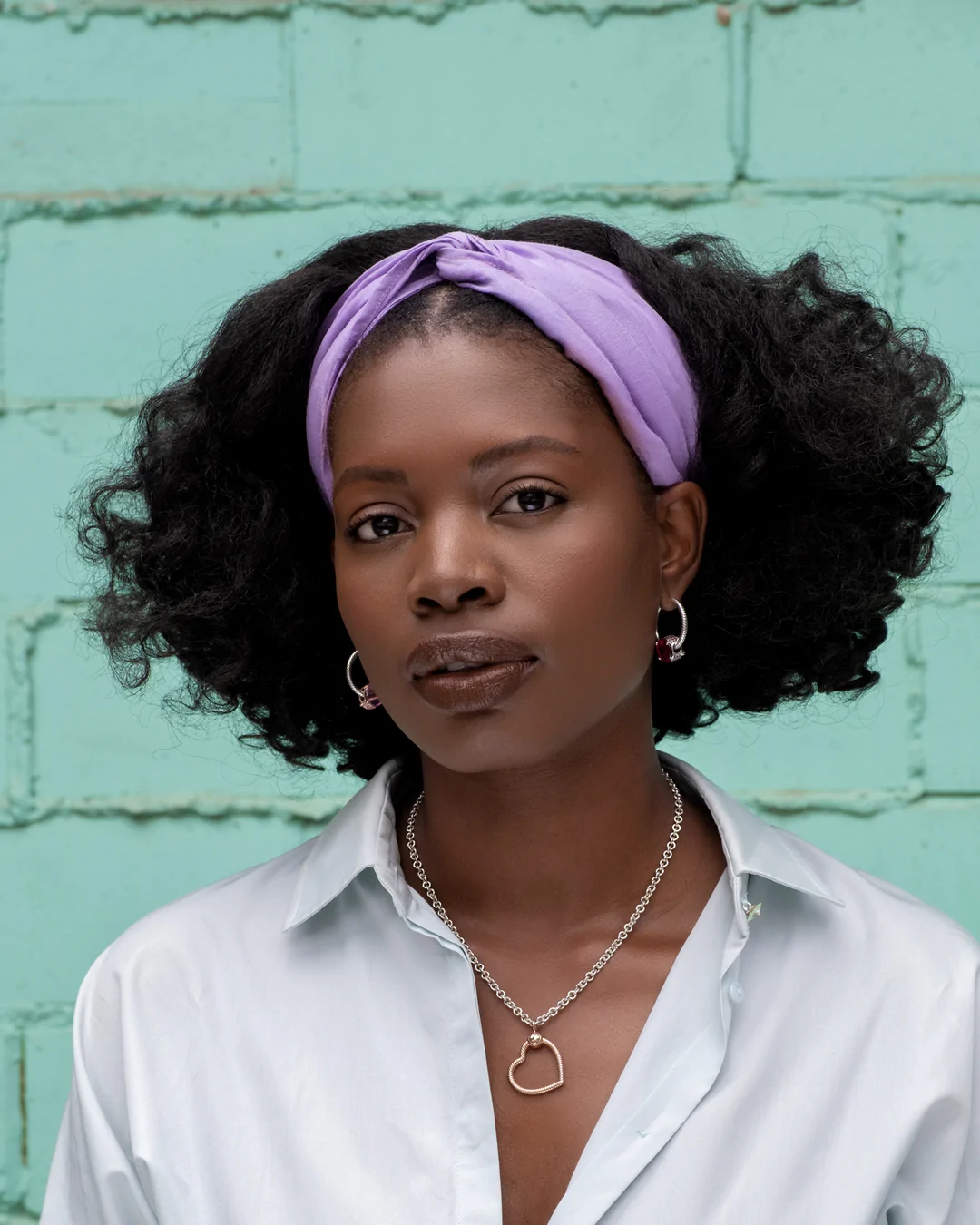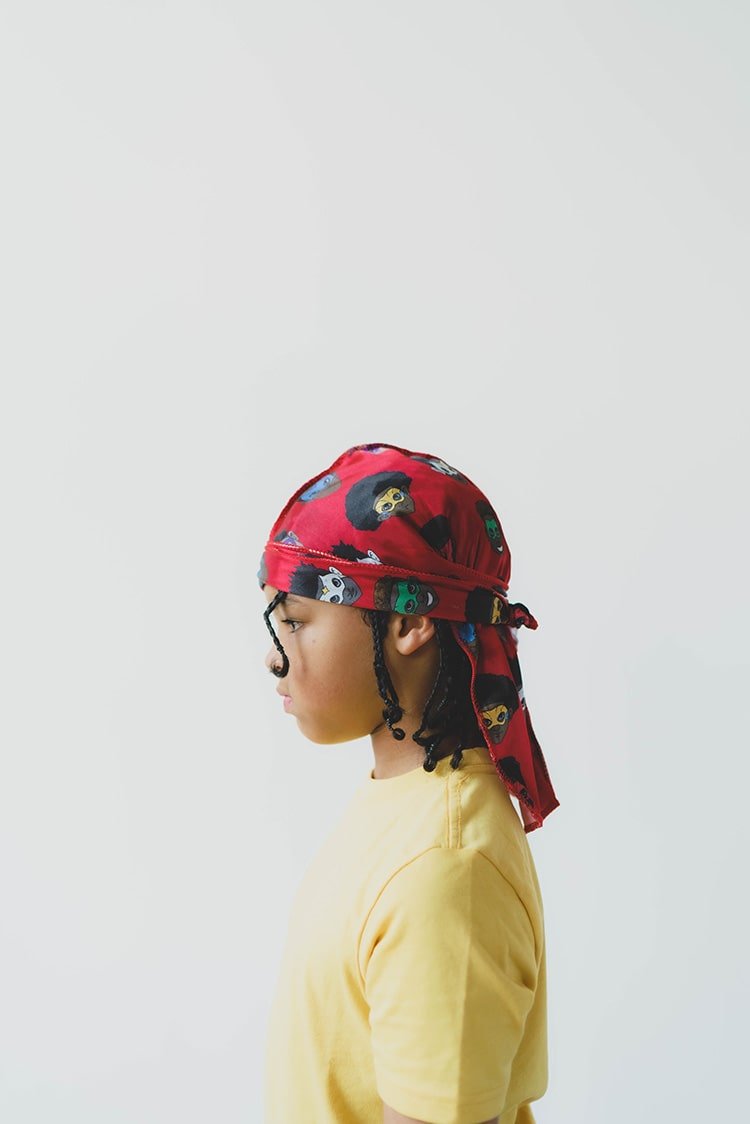6 Steps - An Effective Hair Care Regimen for your Child

A hair care regimen is essential in promoting the health of your child's hair. After you learn and incorporate the components of a simple yet effective natural hair care regimen, you will notice that your child's hair becomes more manageable, but where exactly do you start? What kind of products and techniques should you use? What hairstyles should you strive to incorporate that promote health and retain your child's hair length?
It all starts with a proper regimen, which is the first practical step to learning how to take care of your little one's hair. Read on to learn the 6 Steps to a simple yet effective hair care regimen to help you learn how to take care of your little one's hair properly.
Shampoo - How to use it
Shampooing is an essential step in a healthy hair care regimen. You should use a shampoo product once weekly or every two weeks to ensure that your child's hair and scalp are clean. Shampoo removes hair product buildup, dandruff, and other environmental particles and further supports optimum hair health. As Shampoo cleans and removes excess oil in your hair, it's essential not to prevent overuse of this product. A common mistake when using Shampoo is working the product through the entire hair length; this can damage the hair and leave your hair drying and wholly stripped of necessary oil. Because of its powerful cleaning properties, examining the ingredients is essential to ensure the product isn't working against your desired hair goals. The best moisturizing Shampoo does not contain ingredients such as paraben, sulfates, and silicones.
Two Ways to Apply Shampoo
You can apply two different techniques while shampooing your child's hair. There's the traditional approach: Shampoo the hair loose and free. An alternative is the sectioning method, in which you section your child's hair into two or more sections. The number of parts will vary based on the density and length of your child's hair. An essential factor to keep in mind when abiding by a proper hair regimen is hair retention is vital. When determining which technique is appropriate for your child's hair, you should account for two things;
1. The likelihood of the hair tangling
2. The process of detangling.
Using sectioning throughout the remainder of your child's hair care regimen is recommended. If your child has thick or curly hair, you should incorporate the sectioning technique to save you the most time and prevent the hair from becoming tangled. More tangles equate to more friction; more friction results in more breakage, and an increase in breakage results in hair loss. This domino effect is the opposite of most of the goals we set for our children's hair. Choosing the technique that best suits you and your child is beneficial.
Temperature Check - Is your water too hot?
Remember, always use warm-cool water when washing your child's hair. Hot water can make your child's hair brittle and promote breakage and loss.
Step Two - Deep Conditioner
As mentioned above, Shampoo cleans and strips the hair of essential oils. So, we must help restore this nourishment to our hair shaft. We do this through a deep conditioner, which adds nutrients and shine to your child's hair. A healthy hair regimen should include an excellent moisturizing deep conditioner. After shampooing, apply the deep conditioner to your child's hair. From here, you have two options.
- Allow the hair to remain loose for the instructed time listed on the deep conditioner product bottle.
- Apply heat using a shower cap or indirect heat tool such as a hooded dryer.
For optimal hair health, follow Step two. Read on, and I'll tell you why.

Indirect Heat for Deep Conditioning
Applying indirect heath during your child's deep conditioning treatment enables your child's cuticles to open for some time. The deep conditioner can further penetrate your child's hair shaft and provide nourishment from the inside out. When using a hooded dryer, have your child sit under the hood on medium heat for approximately 10 minutes, then rinse hair with cool water.
Shower caps are a phenomenal indirect heating method for children, allowing for mobility while simultaneously conditioning one's hair. Our shower caps are satin-lined and reversible, making them appropriate for blocking out humidity and deep conditioning treatments. Placing a shower cap over your little one's head with the deep conditioner traps the heat generated from one's head into the shell of the shower cap, offering the same general effect as a hooded dryer. When deep conditioning with a shower cap, cover your child's head, allow the product to sit for about 30 minutes, and rinse with cool water.

Step Three - Leave-in-Conditioner
A leave-in conditioner can be a valuable component of your child's healthy hair care regimen. It's important to note that a leave-in conditioner isn't always necessary in a healthy hair care regimen. Today, many are starting to reject the purpose and benefits of leave-in-conditioners and skipping this step in its entirety. Others promote using this product if your child's hair requires more TLC. I recommend testing what works best for your child's hair and using your discretion. I will dive into this more in a separate article. For now, if you choose to use a leave-in conditioner, you'd wish to apply the product to damp hair after deep conditioning; product manufacturers state this helps close the cuticles of the hair shaft, lock in moisture and protect the hair from environmental damage.
Step Four - Natural Oils
Oh, oil! Another recently controversial topic relates to a healthy hair care regimen, but let's cover the basics. Traditionally, oil is believed to help seal in moisture. Recently, as natural hair has become popular again, many natural hair advocates promote using natural oils. In many natural hair bloggers' writeups and videos, such as olive, almond, and even sunflower oils. Many more natural hair advocates have started to protest this information and label it false. This topic is another topic that I want to take time to dedicate a dedicated article to as there's actual science to take into account and many different sources to evaluate. I can only suggest using what works for you and your child. Popular oils to choose from, only to name a few, include;
- Argan Oil
- Castor Oil
- Olive Oil
- Amala Oil
- Coconut Oil
Step 5 - Incorporating Protective Styling into your Child's Hair Care Regimen.
The term "protective style" has become overused more recently. We can chalk this up to the growing popularity of natural hair trends and social media. What is a protective style? A protective style is any hairstyle that reduces the over-manipulation of one's hair. These styles protect the ends of the hair from breaking and overexposure to harsh elements. Examples of protective hairstyles are braids, twists, Bantu knots - the list goes on. Often overlooked when discussing these styles is retention. Protective styles are a great way to prevent breakage and over-manipulation of your child's hair. Still, all the hard work is wasted if your takedown method is too aggressive or you're not adequately taking care of your child's hair while it's in a protective style and outside of a protective style. Protective styles fall as the 5th step of our 6 Step Hair Care Regimen. Essentially they are pointless if you are not correctly applying Steps 1-4. When your child's hair is not cleaned, hydrated, or nourished, the implementation of braids, twists, and locs will only further promote breakage and dryness. You must address the essential steps that come before this step before implementing protective styles. Many of the popular children's hairstyles we seek are protective. They promote sectioning, expose the scalp for easy moisturizing, and require low manipulation and upkeep. When not too tight, a hair bun is a protective hairstyle. In our Hair Styles blog, I share different hair styling techniques considered protective hairstyling. This section only highlights the steps that follow one another in a hair care regimen. Once you feel confident in steps 1-4, introduce a protective style. Both figuratively and literally - rinse and repeat.
The final step in your child's Hair Care Regimen - A Night Time Routine
A silk or satin bonnet, scarf, or durag is essential in completing your child's hair care regimen. As discussed here, nighttime hair protection is a MUST for an effective regimen. Make sure your child's hair is protected with a Satin Bonnet or Durag, such as the ones available in our My Hero Collection, or sleeps on a satin pillowcase or sheet. Silk or Satin products help retain the moisture you worked so diligently to restore and promote in Steps 1-4, further preventing breakage in your child's hair.
If you need additional support, you can join my community @kidshairnanny at https://linktr.ee/kidshairnanny.
Caveen Brown-Stewart (@kidshairnanny) is an early childhood educator and content creator who lives in the Cayman Islands with her husband and two children. As a content creator, she is passionate about providing hair care advice for moms with natural hair kids. Her goal is to help parents garner the knowledge and skill set needed to properly take care of their daughter's hair to promote hair 'LEC' (love, esteem, and confidence). She has helped moms worldwide through webinars, consultation, and coaching services. You can find more about Caveen @kidshairnanny on Instagram or join her community via the link below; https://linktr.ee/kidshairnanny.




Comments